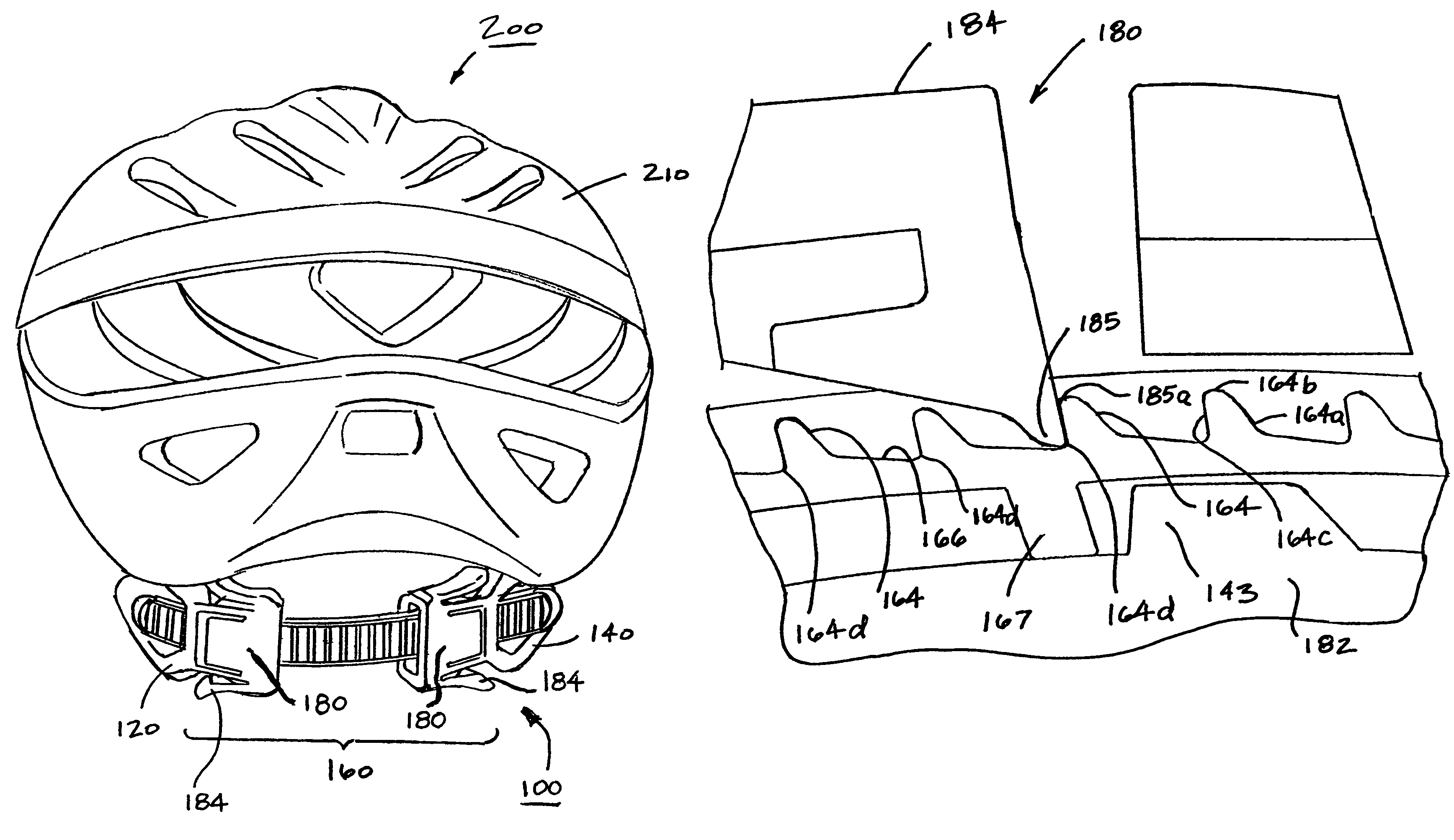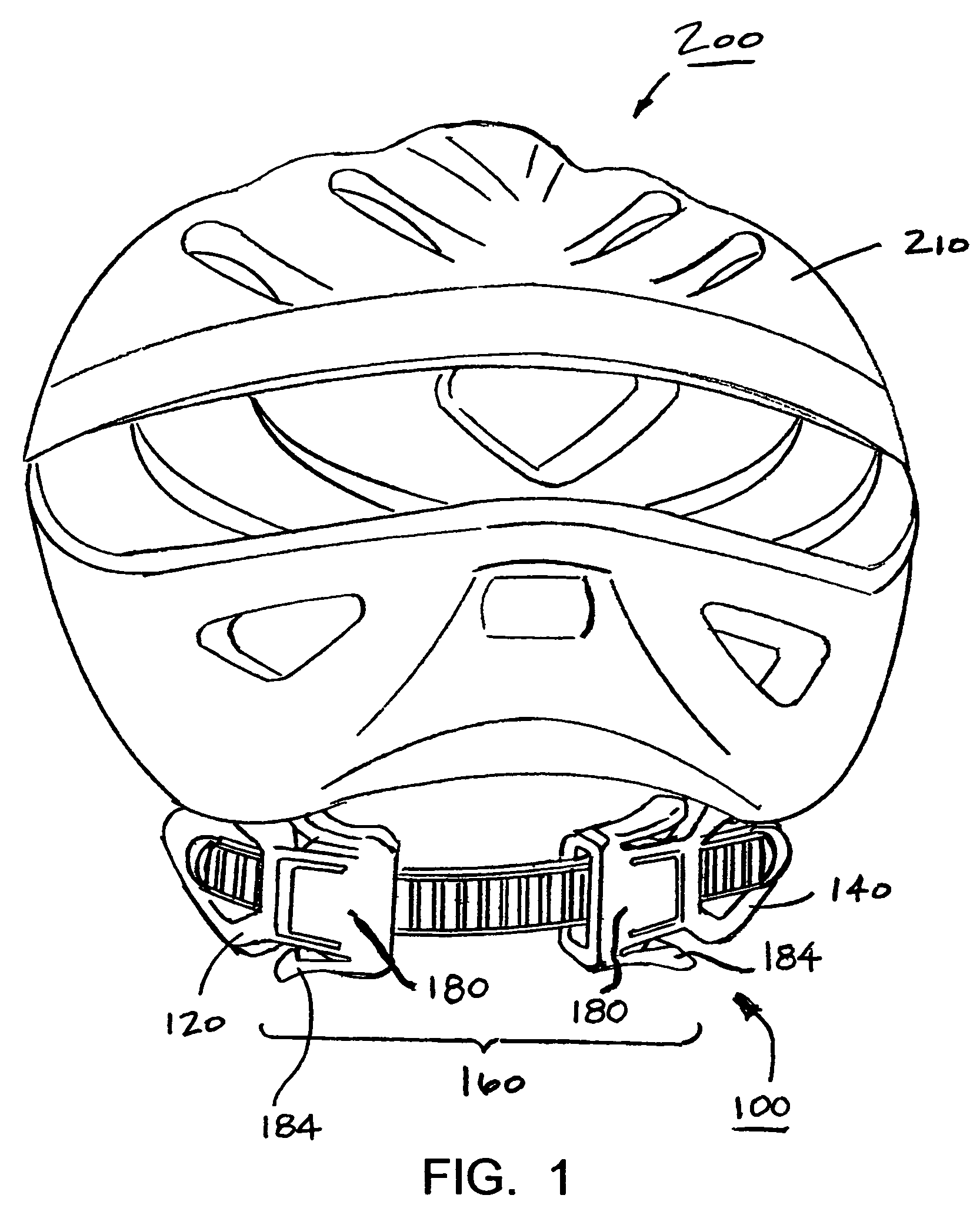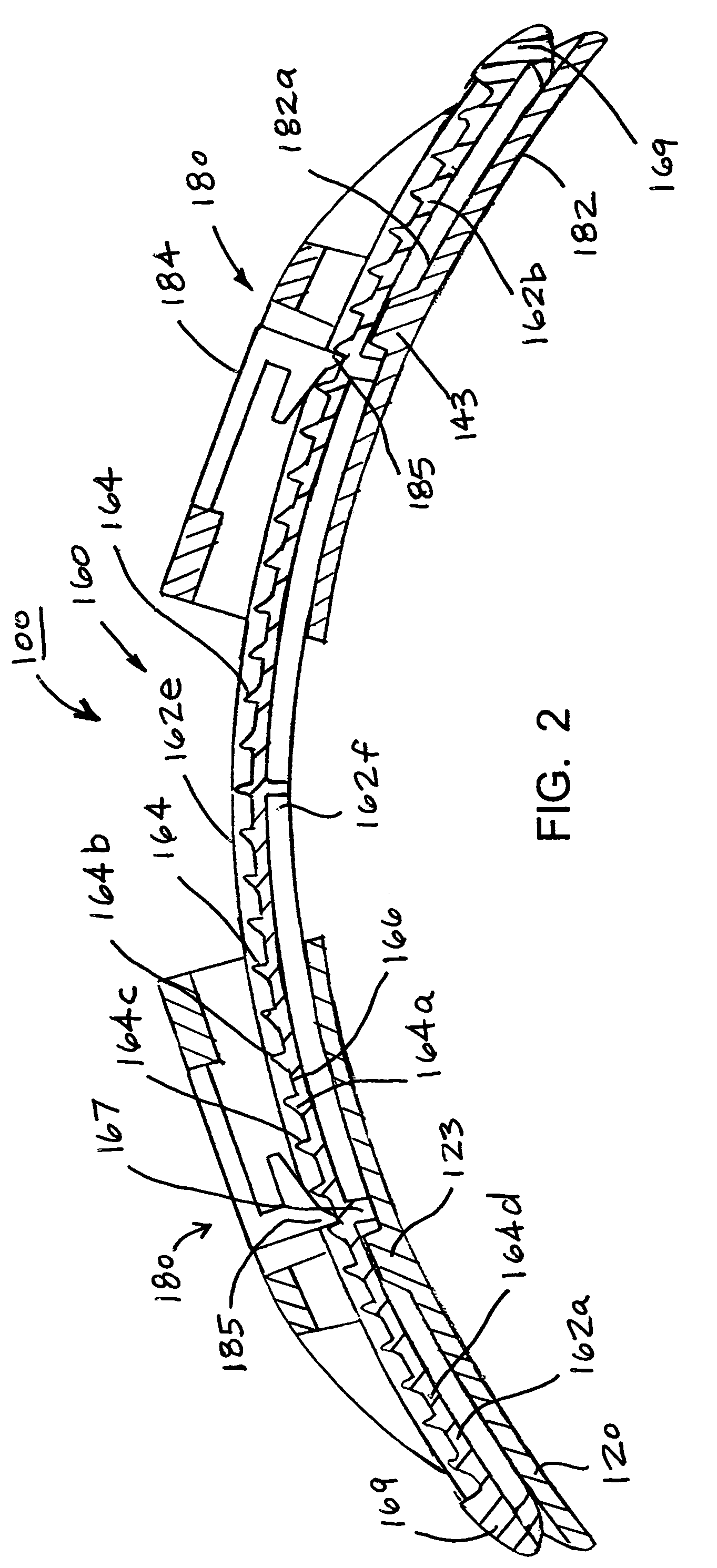Fit adjustment mechanism for helmets
a technology of fit adjustment and helmet, which is applied in the direction of snap fasteners, protective garments, buckles, etc., can solve the problem that polyethylene is an unacceptable material choi
- Summary
- Abstract
- Description
- Claims
- Application Information
AI Technical Summary
Benefits of technology
Problems solved by technology
Method used
Image
Examples
Embodiment Construction
[0021]Referring first to FIG. 1, the present invention is directed to a fit adjustment mechanism for the headband of a helmet, a headband incorporating the fit adjustment mechanism, and a sports helmet incorporating the headband.
[0022]Shown generally as 100 in FIGS. 1 and 2, the headband construction comprises a first strap portion 120, a second strap portion 140, and a fit adjustment mechanism 160 therebetween. When installed in a sports helmet 200, the headband construction 100 will bias the occipital region of the user's head against the front shell portion of the sports helmet 200.
[0023]The first and second strap portions 120, 140 are already known in the art and attach at outer opposed points inside the shell 210 of the sports helmet. The headband construction 100 may further include upwardly extending strap portions such as those shown in FIG. 3. When provided, the upwardly extending strap portions are configured for attachment inside the shell 210 of the sports helmet. As tho...
PUM
 Login to View More
Login to View More Abstract
Description
Claims
Application Information
 Login to View More
Login to View More - R&D
- Intellectual Property
- Life Sciences
- Materials
- Tech Scout
- Unparalleled Data Quality
- Higher Quality Content
- 60% Fewer Hallucinations
Browse by: Latest US Patents, China's latest patents, Technical Efficacy Thesaurus, Application Domain, Technology Topic, Popular Technical Reports.
© 2025 PatSnap. All rights reserved.Legal|Privacy policy|Modern Slavery Act Transparency Statement|Sitemap|About US| Contact US: help@patsnap.com



